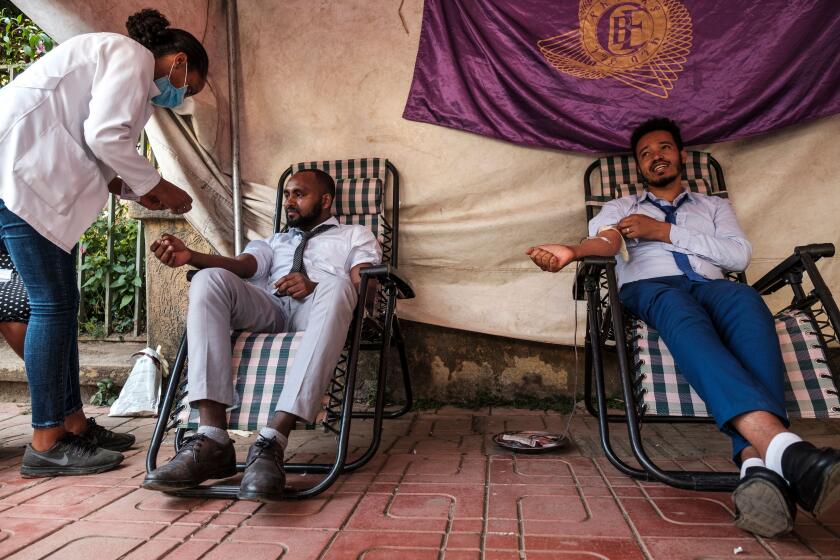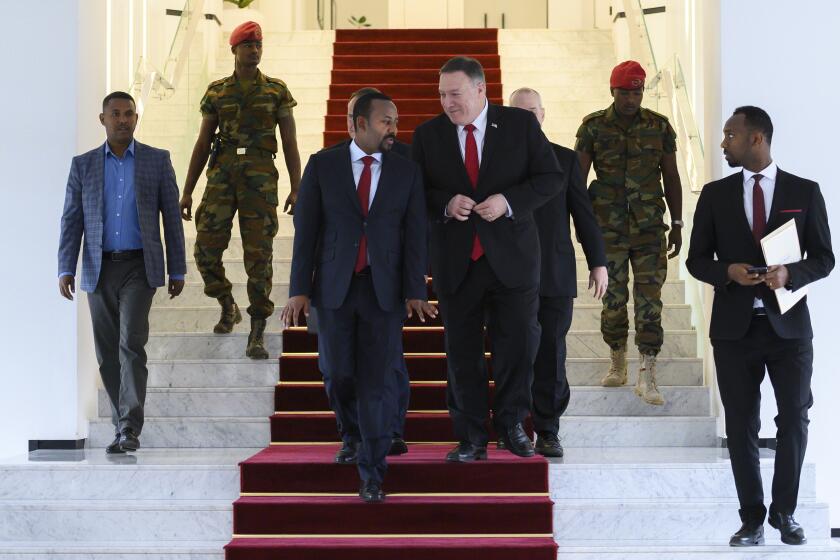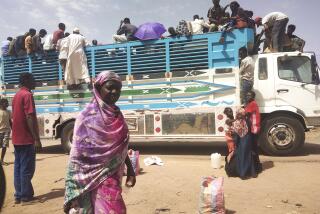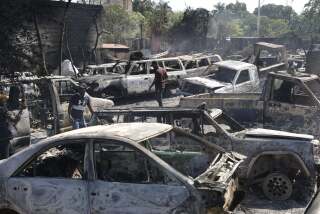Sudan braces for up to 200,000 refugees fleeing fighting in Ethiopia
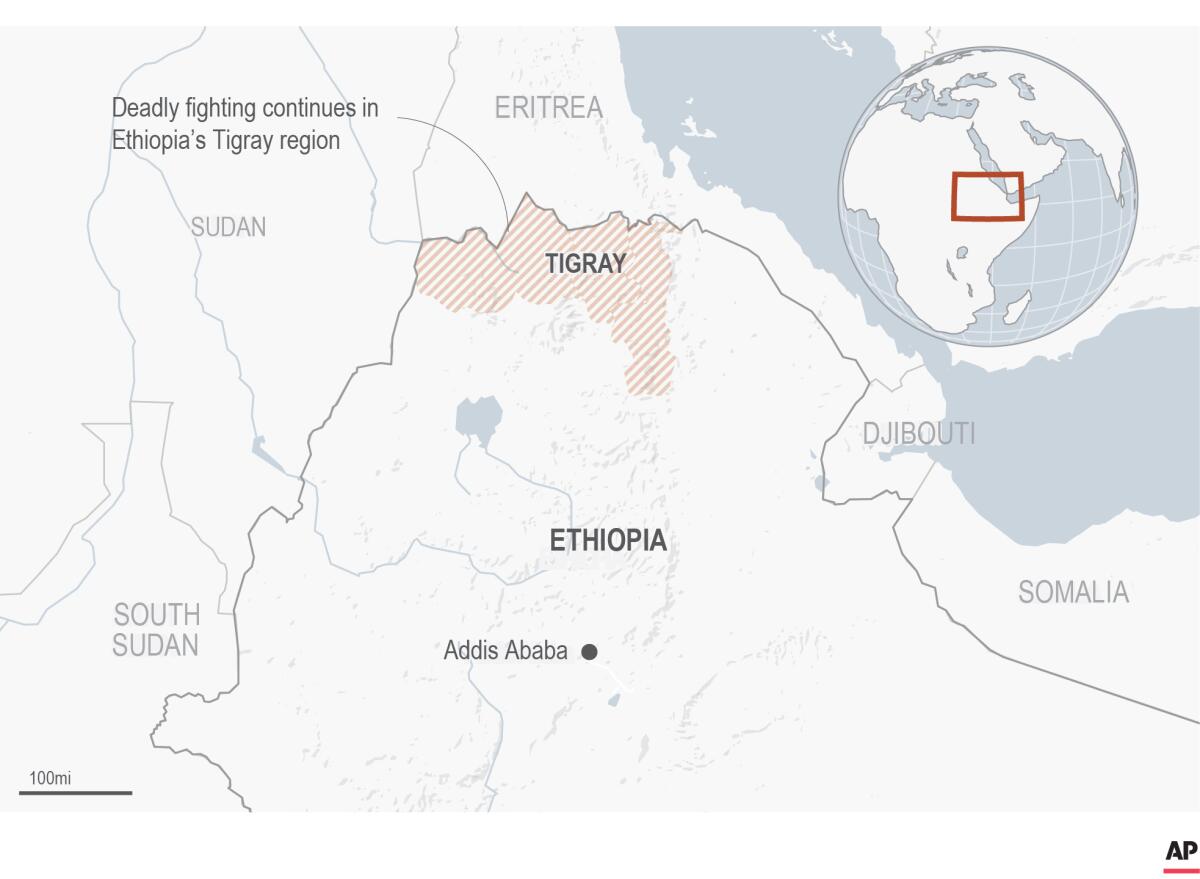
- Share via
NAIROBI, Kenya — Up to 200,000 refugees could pour into Sudan in flight from the deadly conflict in Ethiopia’s northern Tigray region, officials said Wednesday, as details emerge of largely isolated civilians under growing strain.
Already, at least 6,000 people have crossed the border into Sudan, including some wounded in the fighting, and the flow is growing quickly.
Inside the Tigray region, long lines have appeared outside bread shops, and supply-laden trucks are stranded at the region’s borders, the U.N.’s chief humanitarian worker in the country said.
“We want to have humanitarian access as soon as possible,” Sajjad Mohammad Sajid told the Associated Press. “Fuel and food are needed urgently.”
Up to 2 million people in Tigray are having a “very, very difficult time,” including hundreds of thousands of displaced people, Sajid said late Tuesday.
Communications with the Tigray region remain almost completely severed a week after Ethiopia’s Nobel Peace Prize-winning Prime Minister Abiy Ahmed announced a military offensive in response to an alleged attack by regional forces. He has insisted that there will be no negotiations with a regional government he considers illegal until its ruling “clique” is arrested and its well-stocked arsenal is destroyed.
Ethiopia nears civil war, threatening the stability of one of the world’s most strategic regions. Here are key reasons for the international alarm.
Britain and the African Union have urged an immediate de-escalation as the conflict threatens to destabilize the strategic but vulnerable Horn of Africa region.
The standoff leaves nearly 900 aid workers in the Tigray region struggling to contact the outside world with pleas for help. “Nine U.N. agencies, almost 20 NGOs, all depending on two offices” with the means to communicate, Sajid said.
In addition, more than 1,000 people of different nationalities are stuck in the region, he said. That includes tourists. Countries urgently are seeking their evacuation, but airports in Tigray are closed, roads are blocked, internet service is cut off and even banks are no longer operating.
There is no sign of a lull in the fighting, which has included multiple airstrikes by Ethiopian forces and hundreds of people reported dead on each side.
Ethiopia is denouncing ‘belligerent threats’ over the dam it has nearly completed on the Nile after President Trump said Egypt will blow it up.
“It looks like, unfortunately, this may not be something which can be resolved by any party in a week or two,” Sajid said. “It looks like it’s going to be a protracted conflict, which is a huge concern from the point of view of protection of civilians.”
Ethiopia’s federal government and Tigray’s regional government, ruled by the Tigray People’s Liberation Front, blame each other for starting the conflict. Each regards the other as illegitimate. The TPLF dominated Ethiopia’s ruling coalition for years before Abiy came to office in 2018 but has since broken away while accusing the prime minister’s administration of targeting and marginalizing its officials.
It remains difficult for diplomats, experts and others to verify either side’s claims about the fighting. Some Ethiopian journalists are being arrested, the Ethiopian Human Rights Commission said, calling it a “worrying development” amid fears that ethnic Tigrayans could be targeted. Abiy has warned against ethnic profiling.
Experts have compared this to an inter-state conflict, with each side heavily armed and well-trained. The Tigray region has an estimated quarter-million various armed fighters, and of the Ethiopian military’s six mechanized divisions, four are based in Tigray. That’s a legacy of Ethiopia’s long border war with Eritrea, which made peace after Abiy came to power but remains at bitter odds with the TPLF.
Breaking News
Get breaking news, investigations, analysis and more signature journalism from the Los Angeles Times in your inbox.
You may occasionally receive promotional content from the Los Angeles Times.
The Tigray president Tuesday accused Eritrea of attacking his region at the request of Ethiopia, saying that “the war has now progressed to a different stage,” he said. Eritrean officials have not responded to requests for comment.
Under growing pressure, at least 6,000 Ethiopian refugees have crossed the now-closed border into Sudan, the state-run SUNA news agency there reported. The agency, citing unidentified officials, said that more than 200,000 Ethiopians were expected to cross into Sudan in the coming days.
A Sudanese official urged U.N. agencies to speed up their response in the provinces of Kassala and Qadarif along the Ethiopian border.
“More and more people, including wounded from the operations there, are still coming. The numbers are increasing rapidly. There are lots of children and women,” Al Sir Khalid, the head of the refugee agency in Kassala, said. “They are arriving very tired and exhausted. They are hungry and thirsty since they have walked long distances on rugged terrain.”
Local authorities are overwhelmed, and the situation on the ground is deteriorating rapidly, he said.
More to Read
Sign up for Essential California
The most important California stories and recommendations in your inbox every morning.
You may occasionally receive promotional content from the Los Angeles Times.
